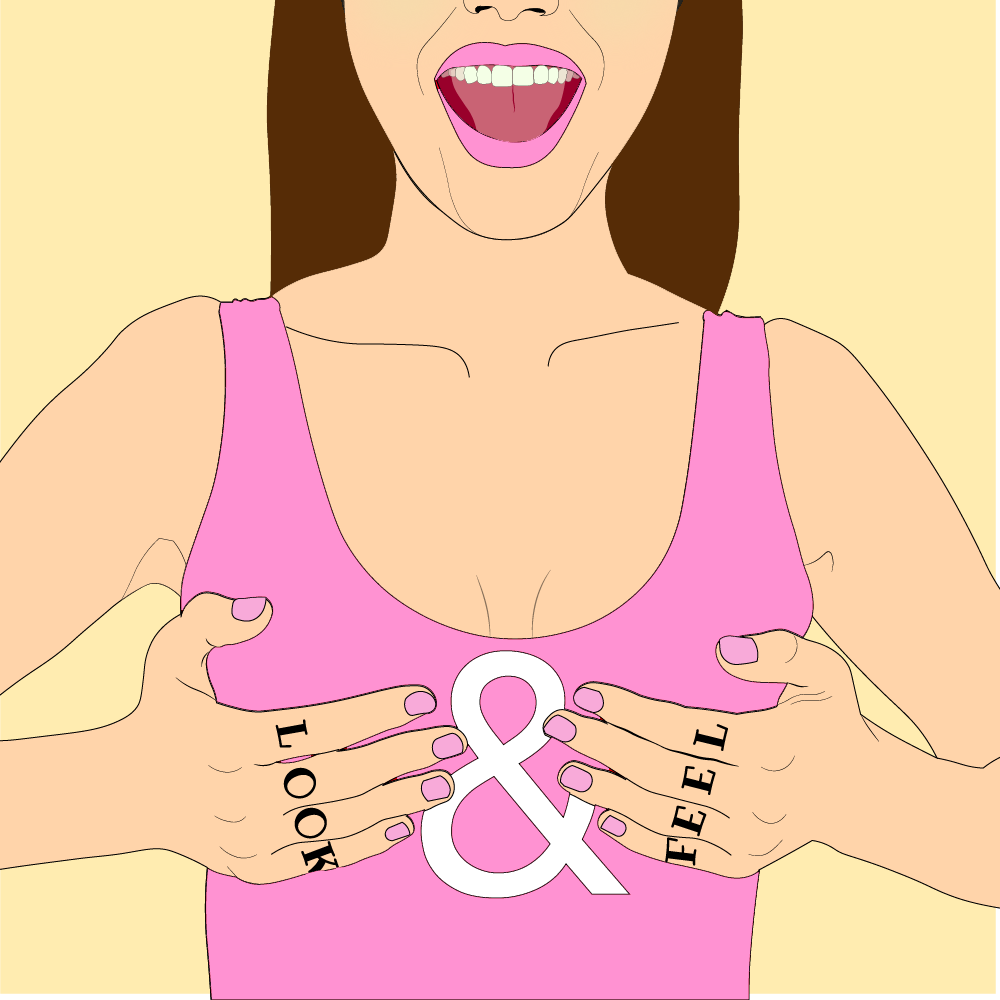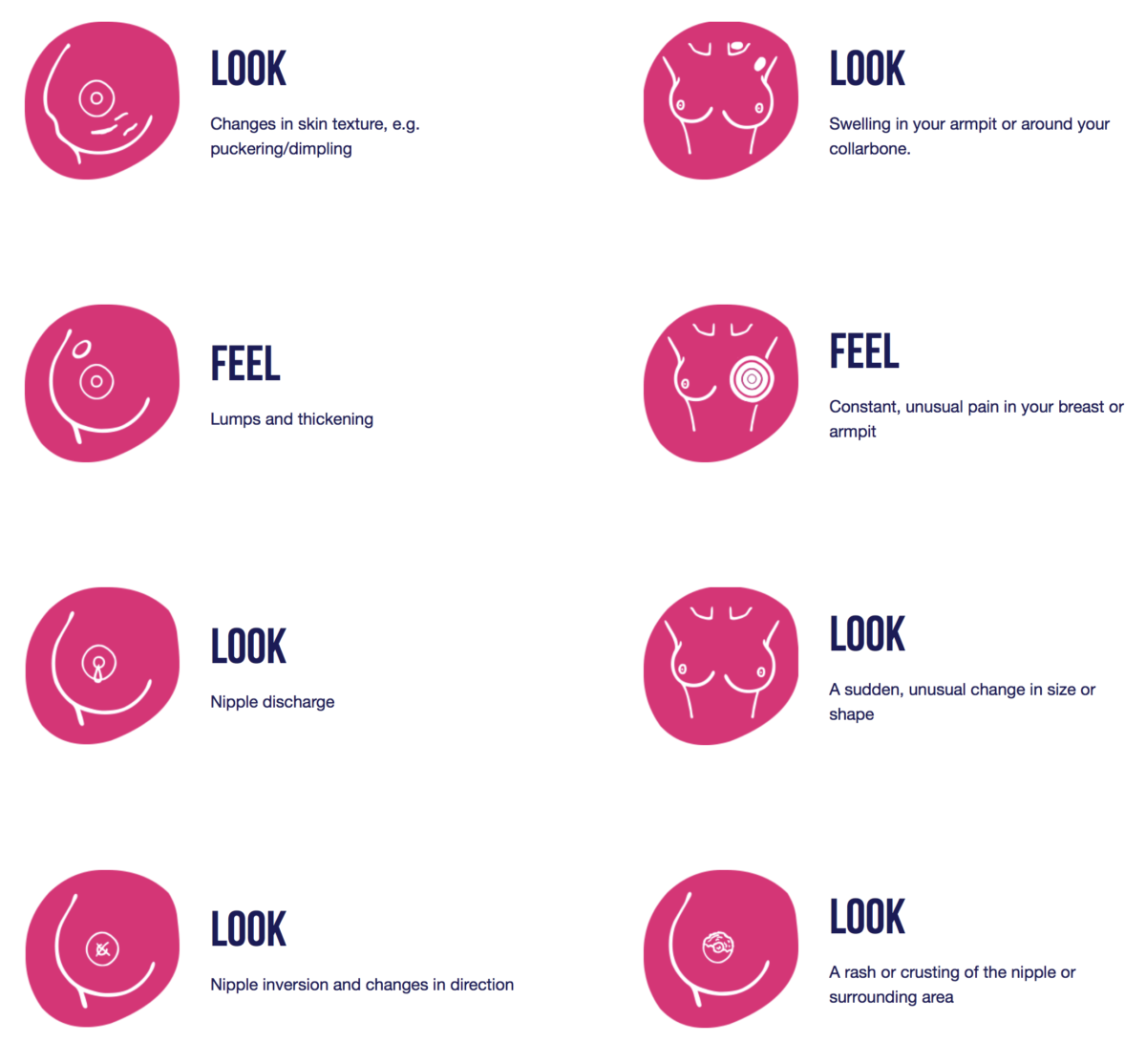
Whatever your age or gender, knowing your body and being aware of the symptoms of breast cancer is really important.
It sounds a bit scary, but it’s really important to know that in the UK 1 in 8 women will be diagnosed with breast cancer in their lifetime. And guys listen up, as around 400 men a year will be diagnosed too.
It’s a funny one because I’ve grown up reading articles in magazines or online which have repeatedly told us to “check your boobs!”. We know this stuff. We’ve ran Cancer research races, most people have unfortunately had family or friends go through various cancers. It doesn’t make it any easier to come to terms with potentially getting something ourselves.
It’s sometimes easier to think “it won’t happen to me”, and blindly carry on with our lives, or perhaps worry if we do check then we’ll find something and prefer to just keep our heads in the sand – ignorance can often feel much safer.
The stark reality is that six million women have declared they don’t know how to check their breasts for cancer and a staggering 80% of women are unclear on what could increase their risk of breast cancer, according to Bupa Health Clinics.
And research has shown that the pandemic hasn’t helped this either.
According to the 2020 study by Estee Lauder Companies’ Breast Cancer Campaign, nearly two thirds (61%) of women are feeling more isolated and 60% are feeling less connected to their friends and family. Talking about breast cancer and being breast aware is a vital part of creating a cancer free world, yet 43% of women said they would be less likely to share breast health concerns.
Some new statistics show:
- One in five women (20%) check their breasts less than once a year and 10% have never checked their breasts for signs of cancer
- Only half (56%) of the Black women surveyed check their breasts every month.
- Younger women (21% of 18-34-year olds) are even less likely to visit a doctor if they noticed any unusual changes in their breasts
- Nearly one in 10 (9%) wouldn’t want to burden their doctor
Professor Ian Smith, Consultant Medical Oncologist and Professor of Cancer Medicine at the Royal Marsden, and ELC-funded Breast Cancer Research Foundation (BCRF) researcher, said:
“The coronavirus pandemic has had a severe impact on the fundraising of many organisations so, now more than ever, funding is needed to ensure that breast cancer research can continue to move forward. It’s also troubling that, as indicated by this research, some women may be less likely to share concerns about their breast health in the wake of Covid-19. The earlier a breast tumour is found, the better we can treat it, so anyone concerned about a potential breast cancer symptom should get it checked by their GP.”

What to LOOK for when checking your boobs:
– Changes in skin texture – dimpling or puckering
– Nipple discharge
– Swelling in your armpit or around collarbone (so important not to miss!)
– A sudden change in size or shape to what they usually look like
– A rash or crusting of the nipple or surrounding area
– Nipple inversion and changes in direction
What to FEEL for when checking your boobs:
– It is important to get to know how your boobs are at various times of the month: how do they change when you’re ovulating or on your period? Do they become tender? Getting to know how they feel is a key part of being able to spot changes.
– Have a gentle feel for irregular lumps (which can be relatively small) that are firm and solid, or thickening which isn’t normal for you.
– Keep your eye out if you feel any constant or unusual pain in your breast or armpit
.

Remember your Collarbone and armpits
Breast tissue isn’t only found in your boobs. It reaches all the way up to your collarbone and underneath your armpit so this whole area should be checked each time too. This is the same for both men and women.
Every woman’s breasts are different in terms of size, shape and consistency. It’s also possible for one breast to be larger than the other.
Get used to how your breasts feel at different times of the month. This can change during your menstrual cycle. For example, some women have tender and lumpy breasts, especially near the armpit, around the time of their period.
After the menopause, normal breasts feel softer, less firm and not as lumpy.
Always see your GP if you are concerned
Breast changes can happen for many reasons, and most of them aren’t serious. Lots of women have breast lumps, and 9 out of 10 are not cancerous.
However, if you find changes in your breast that aren’t normal for you, it’s best to see your GP as soon as possible. This is because it is important to rule out breast cancer. If cancer is detected, then appropriate treatment should be planned as quickly as possible.
For more information, head over to CoppaFeel or if you are concerned, don’t be afraid to book an appointment with your GP. If in doubt, get checked out.



